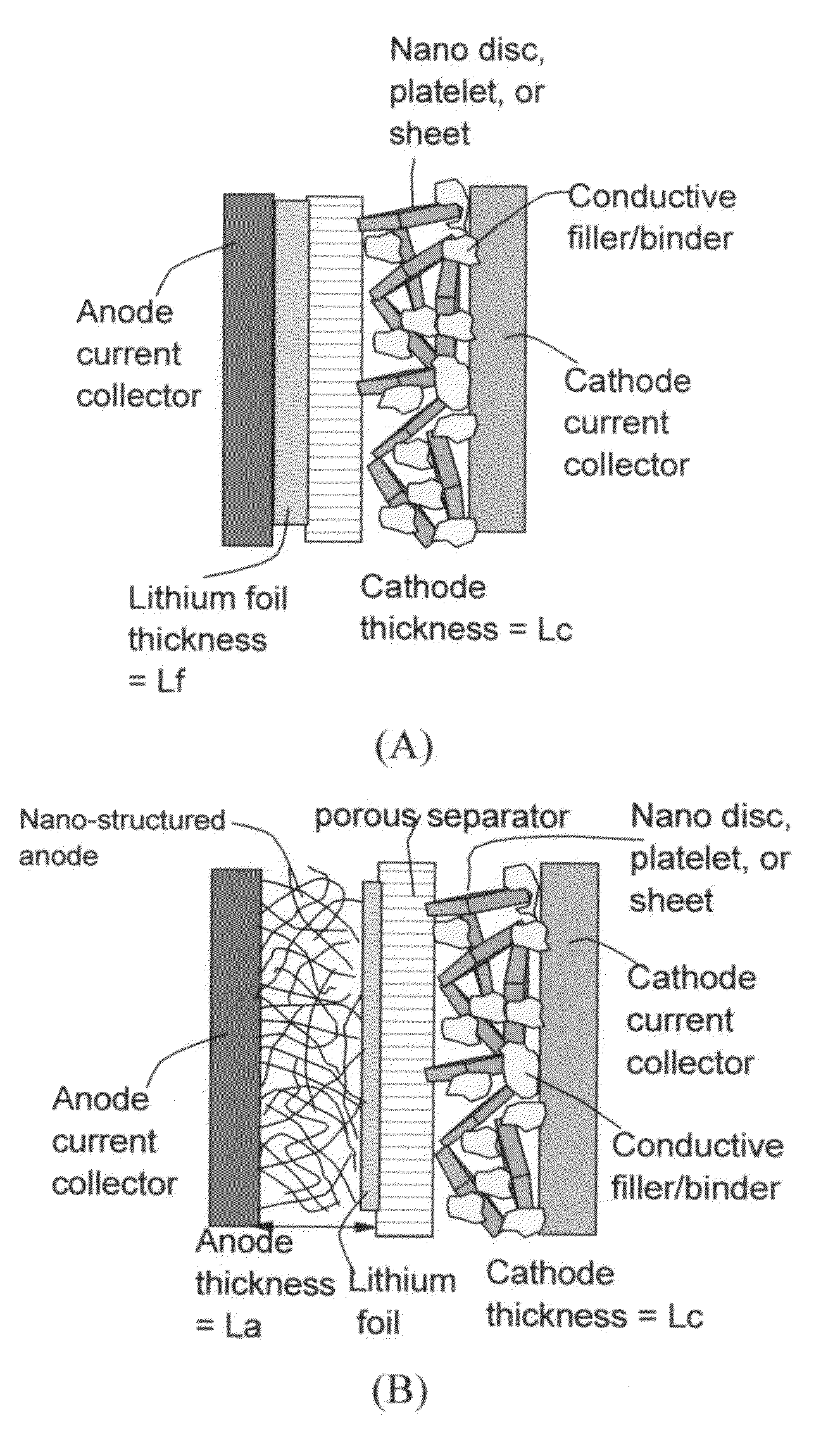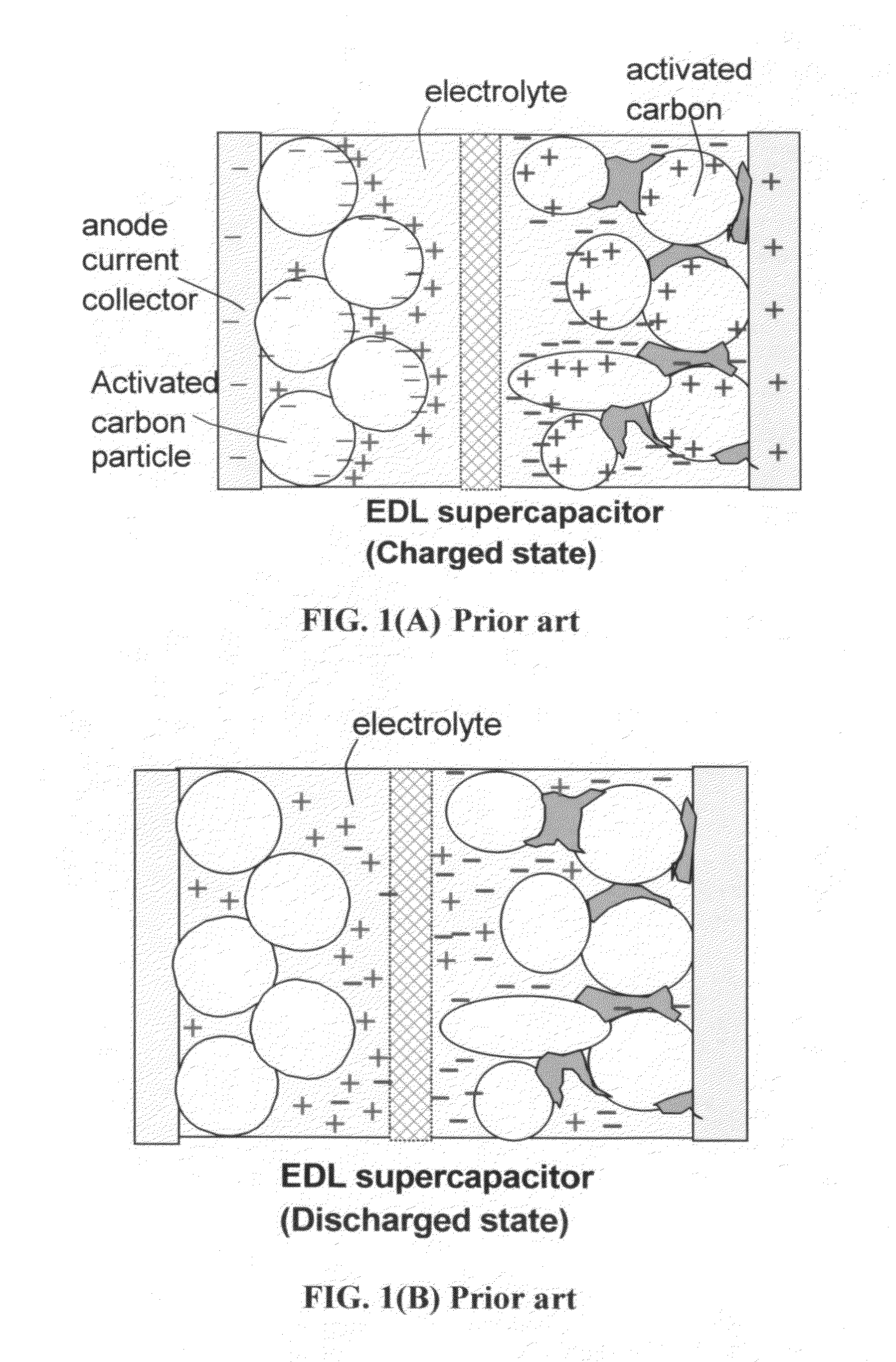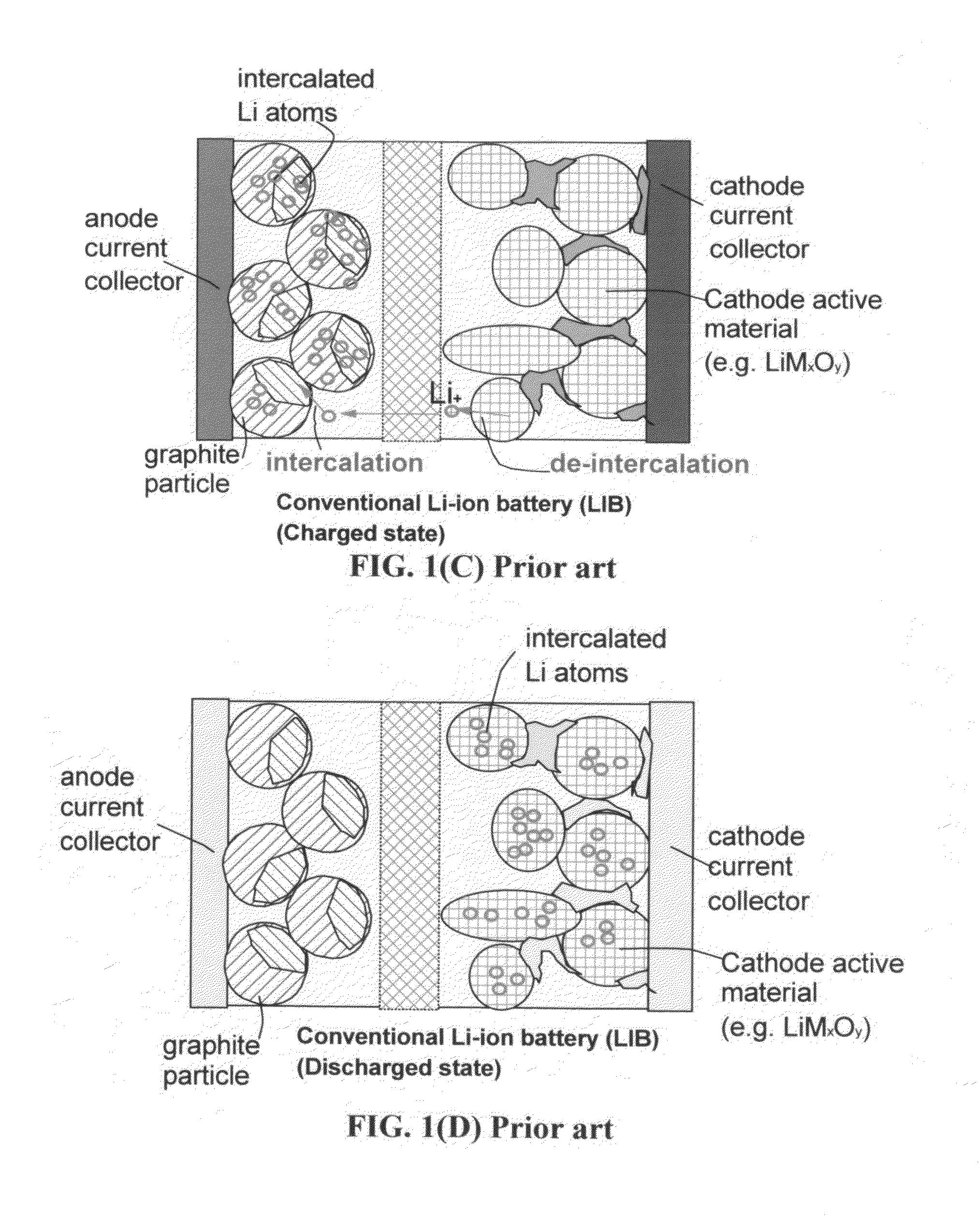Inorganic nano sheet-enabled lithium-exchanging surface-mediated cells
a lithium-ion battery and nano-sheet technology, applied in the field of totally new surface-mediated cells, can solve the problems of low energy density, low power density of lithium-ion batteries, and technological barriers to widespread implementation of supercapacitors for various industrial applications, and achieve low volatility and non-flammability, high diffusion coefficient, and high diffusion rate
- Summary
- Abstract
- Description
- Claims
- Application Information
AI Technical Summary
Benefits of technology
Problems solved by technology
Method used
Image
Examples
example 1
Production of Molybdenum Diselenide Nano Platelets Using Direct Ultrasonication
[0157]A sequence of steps can be utilized to form nano platelets from many different types of layered compounds: (a) dispersion of a layered compound in a low surface tension solvent or a mixture of water and surfactant, (b) ultrasonication, and (c) an optional mechanical shear treatment.
[0158]For instance, dichalcogenides (MoSe2) consisting of Se—Mo—Se layers held together by weak van der Waals forces can be exfoliated via the direct ultrasonication process invented by our research group. Intercalation can be achieved by dispersing MoSe2 powder in a silicon oil beaker, with the resulting suspension subjected to ultrasonication at 120 W for two hours. The resulting MoSe2 platelets were found to have a thickness in the range of approximately 1.4 nm to 13.5 nm with most of the platelets being mono-layers or double layers.
[0159]Other single-layer platelets of the form MX2 (transition metal dichalcogenide), i...
example 2
Production of ZrS2 Nano Discs
[0160]In a representative procedure, zirconium chloride (ZrCl4) precursor (1.5 mmol) and oleylamine (5.0 g, 18.7 mmol) were added to a 25-mL three-neck round-bottom flask under a protective argon atmosphere. The reaction mixture was first heated to 300° C. at a heating rate of 5° C. / min under argon flow and subsequently CS2 (0.3 mL, 5.0 mmol) was injected. After 1 h, the reaction was stopped and cooled down to room temperature. After addition of excess butanol and hexane mixtures (1:1 by volume), 18 nm ZrS2 nano discs (˜100 mg) were obtained by centrifugation. Larger sized nano discs ZrS2 of 32 nm and 55 nm were obtained by changing reaction time to 3 h and 6 h, respectively otherwise under identical conditions.
example 3
Preparation of Boron Nitride Nano Sheets
[0161]Five grams of boron nitride (BN) powder, ground to approximately 20 μm or less in sizes, were dispersed in a strong polar solvent (dimethyl formamide) to obtain a suspension. An ultrasonic energy level of 85 W (Branson 5450 Ultrasonicator) was used for exfoliation, separation, and size reduction for a period of 1-3 hours. This is followed by centrifugation to isolate the BN nano sheets. The BN nano sheets obtained were from 1 nm thick (<3 atomic layers) up to 7 nm thick.
PUM
 Login to View More
Login to View More Abstract
Description
Claims
Application Information
 Login to View More
Login to View More - R&D
- Intellectual Property
- Life Sciences
- Materials
- Tech Scout
- Unparalleled Data Quality
- Higher Quality Content
- 60% Fewer Hallucinations
Browse by: Latest US Patents, China's latest patents, Technical Efficacy Thesaurus, Application Domain, Technology Topic, Popular Technical Reports.
© 2025 PatSnap. All rights reserved.Legal|Privacy policy|Modern Slavery Act Transparency Statement|Sitemap|About US| Contact US: help@patsnap.com



